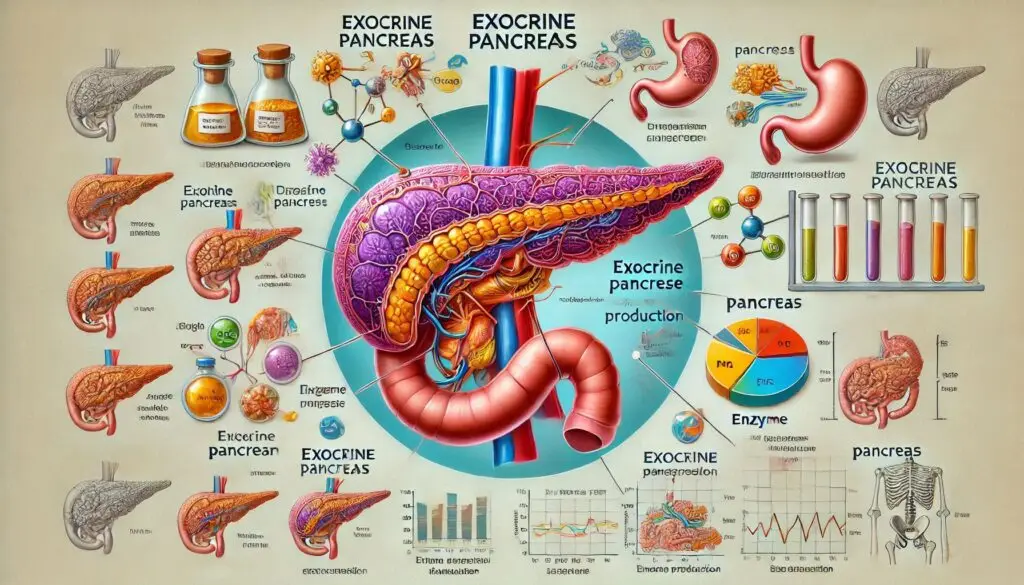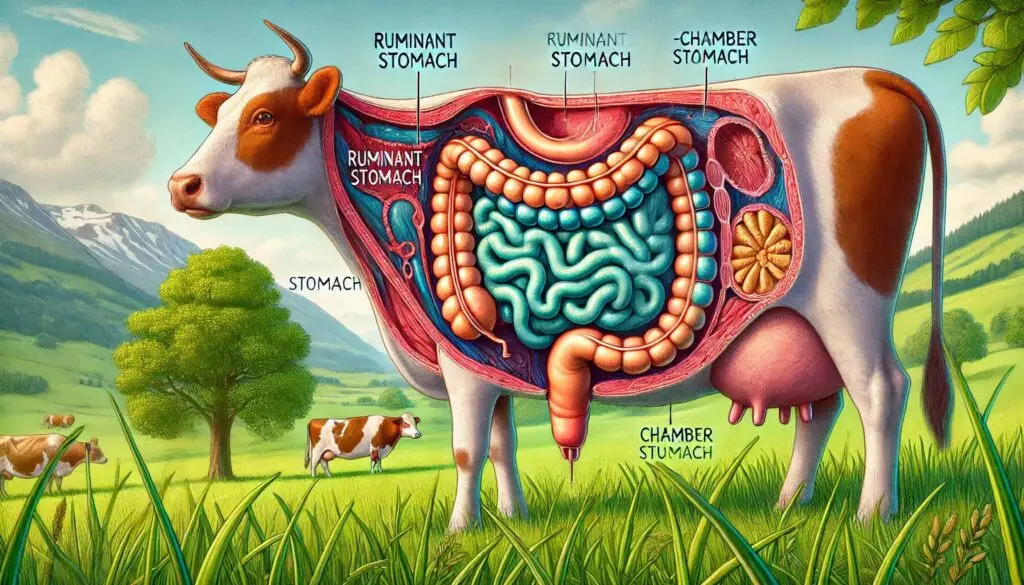Exocrine Pancreas

Anatomy of the Exocrine Pancreas
The pancreas is a unique organ located behind the stomach. It has both endocrine and exocrine functions. The exocrine part accounts for about 99% of the pancreas’s mass. This section is primarily responsible for producing digestive enzymes.
Structure of the Pancreas
- Location: The pancreas lies horizontally across the back of the abdomen.
- Parts: It consists of three main sections:
- Head: The widest part of the pancreas, nestled in the curve of the duodenum.
- Body: The middle section that extends towards the left side.
- Tail: The tapered end that approaches the spleen.
Cells Involved
The exocrine pancreas is made up of:
- Acinar Cells: These cells produce digestive enzymes.
- Ductal Cells: These cells line the ducts that transport pancreatic juices to the small intestine.
Functions of the Exocrine Pancreas
The exocrine pancreas plays a crucial role in digestion by secreting enzymes into the small intestine.
Digestive Enzymes
The primary function of the exocrine pancreas is to produce digestive enzymes. These enzymes include:
- Amylase: Breaks down carbohydrates into sugars.
- Lipase: Digests fats into fatty acids and glycerol.
- Proteases (e.g., trypsinogen): Breaks down proteins into peptides.
These enzymes are secreted in an inactive form to prevent them from digesting pancreatic tissue. They become active once they enter the duodenum.
Bicarbonate Secretion
In addition to enzymes, the exocrine pancreas secretes bicarbonate ions. This secretion helps neutralize stomach acid as it enters the small intestine. The alkaline environment is essential for optimal enzyme activity.
Pancreatic Juice Composition
Pancreatic juice contains:
- Water
- Electrolytes (mainly sodium bicarbonate)
- Digestive enzymes
This juice is crucial for effective digestion and absorption of nutrients.
Regulatory Mechanisms
The secretion of pancreatic juices is tightly regulated by hormonal and neural signals.
Hormonal Regulation
Two key hormones regulate pancreatic secretion:
- Cholecystokinin (CCK): Released when fats and proteins enter the duodenum, CCK stimulates acinar cells to release digestive enzymes.
- Secretin: Released in response to acidic chyme entering the duodenum, secretin prompts ductal cells to secrete bicarbonate.
These hormones work together to ensure that pancreatic juices are released at appropriate times during digestion.
Neural Regulation
The autonomic nervous system also influences pancreatic secretion:
- Parasympathetic Stimulation: The vagus nerve stimulates enzyme secretion during digestion.
- Sympathetic Stimulation: This can inhibit secretion during stress responses.
Clinical Significance
Understanding the exocrine pancreas is vital for diagnosing and treating various conditions.
Pancreatitis
Pancreatitis is inflammation of the pancreas. It can occur due to:
- Alcohol consumption
- Gallstones
- Certain medications
Symptoms include abdominal pain, nausea, and vomiting. Chronic pancreatitis can lead to permanent damage and affect digestion. For more information on pancreatitis, visit Mayo Clinic.
Pancreatic Insufficiency
This condition occurs when the pancreas does not produce enough digestive enzymes. Symptoms include:
- Bloating
- Diarrhea
- Weight loss
Patients may require enzyme replacement therapy to aid digestion. Learn more about pancreatic insufficiency at Cleveland Clinic.
Exocrine Pancreatic Cancer
Pancreatic cancer often affects exocrine cells. Symptoms may include:
- Jaundice
- Unexplained weight loss
- Abdominal pain
Early detection is challenging but crucial for effective treatment. For more details on this type of cancer, check American Cancer Society.
Conclusion
The exocrine pancreas plays an essential role in digestion through enzyme production and bicarbonate secretion. Its proper functioning is vital for nutrient absorption and overall health. Understanding its structure and functions helps in recognizing potential disorders related to this organ.
More from Veterinary Anatomy:
Epithelial Tissue






Responses